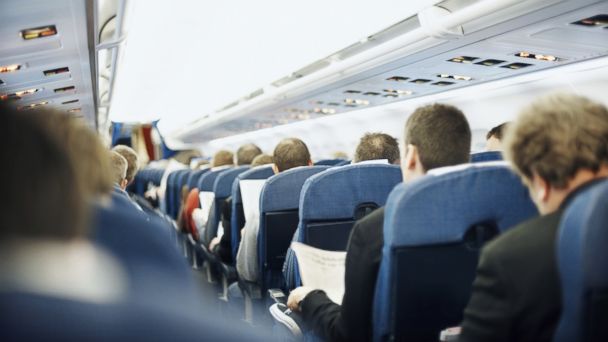Are Airplane Seats a Ticket to Infection?
By Sheliza Lalani, MD, MPH
The sneezing passenger in seat 5B. The coughing, hacking child seated between you and the aisle.
Catching something during a flight in one of these situations is something that many of us have worried about. But a new study suggests that there are other ways to catch nasty bugs from planes.

(Getty Images)
The study found that certain types of bacteria can survive for up to a week on the inside surfaces of aircraft cabins - including your armrest, your plastic tray table, the metal toilet button, the window shade and your seat pocket.
To determine this, researchers at Auburn University took samples of all of these materials and contaminated them with two disease-causing germs - the superbug MRSA, which causes nasty wound and soft-tissue infections, and E.Coli O157:H7, which can lead to diarrhea and other more dangerous illnesses.
MRSA, the researchers found, survived a week on the seat-back pocket, while E.Coli survived four days on the armrest.
"Many air travelers are concerned about the risks of catching a disease from other passengers given the long time spent in crowded air cabins," study author Kiril Vaglenov said in a statement. He added that the study is "our first step in investigating this potential problem."
Vaglenov is not the only one to find nasty bacteria on board.
"We have detected MRSA on aircrafts - usually the tray that comes down in front of you," said Dr. Charles Gerba, a microbiologist at Arizona University, who was not involved with the study. "I tested trays on four flights and found it on at least one tray on each flight.
"We also detected influenza virus and norovirus once each on these flights. The restrooms on planes also get fairly contaminated with E. coli. … Fifty people per toilet on a plane is a lot of use during a long flight."
Currently, the World Health Organization recommends that airlines merely tidy up during transit stops. However, every 24 hours a more intensive cleaning should take place, the organization recommends.
Aircraft crew are "probably trying to do the best they can," said Dr. Christopher Ohl, professor of infectious diseases at Wake Forest Baptist Medical Center, who was also not involved with the study. "Public places are going to have bacteria from other people. If research shows certain fabrics are easier to clean than others, that is what they should use."
"Cleanliness is important, but they can't sterilize their cabins," Ohl added.
But what can airlines do? Vaglenov said his study's findings should prompt them to explore new ways to clean and disinfect these surfaces more effectively - perhaps even incorporating fabrics with antimicrobial properties into the interiors of aircraft.
Doctor's Take
Like it or not, bacteria are everywhere - even in the friendly skies. Fortunately, in most cases it is more difficult to get ill from them than most of us think.
In fact, Ohl said research exists that shows the five-second rule may actually apply in many cases. "If something has been on a dirty surface for more than five seconds," he said, "it has a higher change of getting contaminated."
Practically speaking, the best thing we can do while traveling is to take precautionary measures. So next time you are on a plane, make sure you wash your hands or use your hand sanitizer frequently, and perhaps think about taking a shower as soon as possible after arriving at your destination.